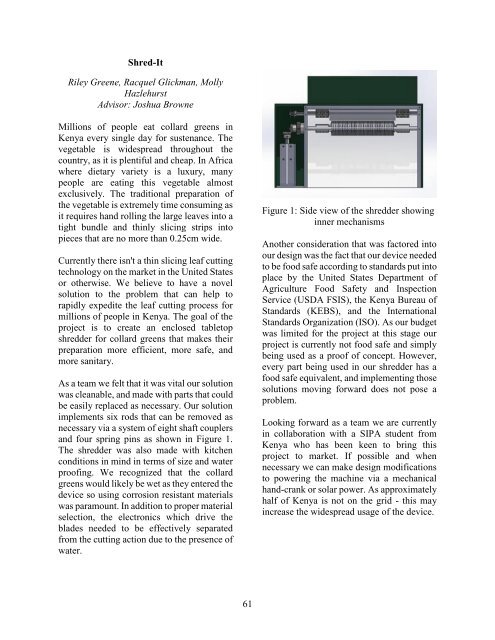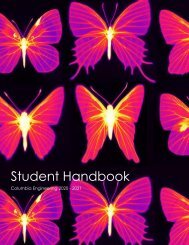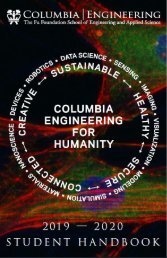Senior Design Expo 2019
The Senior Design Expo, held annually in May at Columbia University, is an opportunity for Columbia Engineering students to showcase what they have learned in their foundational math and science courses together with their engineering courses in innovative, creative, and purposeful designs and prototypes. Each year the Expo showcases more than 60 projects across all nine departments. Projects have included cutting-edge robotics, the New York City subway system, language technology, proposals for bridges to span the Hudson river, and much more.
The Senior Design Expo, held annually in May at Columbia University, is an opportunity for Columbia Engineering students to showcase what they have learned in their foundational math and science courses together with their engineering courses in innovative, creative, and purposeful designs and prototypes. Each year the Expo showcases more than 60 projects across all nine departments. Projects have included cutting-edge robotics, the New York City subway system, language technology, proposals for bridges to span the Hudson river, and much more.
Create successful ePaper yourself
Turn your PDF publications into a flip-book with our unique Google optimized e-Paper software.
Shred-It<br />
Riley Greene, Racquel Glickman, Molly<br />
Hazlehurst<br />
Advisor: Joshua Browne<br />
Millions of people eat collard greens in<br />
Kenya every single day for sustenance. The<br />
vegetable is widespread throughout the<br />
country, as it is plentiful and cheap. In Africa<br />
where dietary variety is a luxury, many<br />
people are eating this vegetable almost<br />
exclusively. The traditional preparation of<br />
the vegetable is extremely time consuming as<br />
it requires hand rolling the large leaves into a<br />
tight bundle and thinly slicing strips into<br />
pieces that are no more than 0.25cm wide.<br />
Currently there isn't a thin slicing leaf cutting<br />
technology on the market in the United States<br />
or otherwise. We believe to have a novel<br />
solution to the problem that can help to<br />
rapidly expedite the leaf cutting process for<br />
millions of people in Kenya. The goal of the<br />
project is to create an enclosed tabletop<br />
shredder for collard greens that makes their<br />
preparation more efficient, more safe, and<br />
more sanitary.<br />
As a team we felt that it was vital our solution<br />
was cleanable, and made with parts that could<br />
be easily replaced as necessary. Our solution<br />
implements six rods that can be removed as<br />
necessary via a system of eight shaft couplers<br />
and four spring pins as shown in Figure 1.<br />
The shredder was also made with kitchen<br />
conditions in mind in terms of size and water<br />
proofing. We recognized that the collard<br />
greens would likely be wet as they entered the<br />
device so using corrosion resistant materials<br />
was paramount. In addition to proper material<br />
selection, the electronics which drive the<br />
blades needed to be effectively separated<br />
from the cutting action due to the presence of<br />
water.<br />
Figure 1: Side view of the shredder showing<br />
inner mechanisms<br />
Another consideration that was factored into<br />
our design was the fact that our device needed<br />
to be food safe according to standards put into<br />
place by the United States Department of<br />
Agriculture Food Safety and Inspection<br />
Service (USDA FSIS), the Kenya Bureau of<br />
Standards (KEBS), and the International<br />
Standards Organization (ISO). As our budget<br />
was limited for the project at this stage our<br />
project is currently not food safe and simply<br />
being used as a proof of concept. However,<br />
every part being used in our shredder has a<br />
food safe equivalent, and implementing those<br />
solutions moving forward does not pose a<br />
problem.<br />
Looking forward as a team we are currently<br />
in collaboration with a SIPA student from<br />
Kenya who has been keen to bring this<br />
project to market. If possible and when<br />
necessary we can make design modifications<br />
to powering the machine via a mechanical<br />
hand-crank or solar power. As approximately<br />
half of Kenya is not on the grid - this may<br />
increase the widespread usage of the device.<br />
61








